The system shown in the figure is in equilibrium and all the blocks are at rest. Assume that the masses of the strings, the pulley and the spring and negligible with respect to the masses of the blocks and friction is absent. Find the acceleration of block C, just after cutting the spring 1. [g=10ms−2]
![The system shown in the figure is in equilibrium and all the blocks are at rest. Assume that the masses of the strings, the pulley and the spring and negligible with respect to the masses of the blocks and friction is absent. Find the acceleration of block C, just after cutting the spring 1. [g=10ms^(-2)]](https://d10lpgp6xz60nq.cloudfront.net/physics_images/NTA_JEE_MOK_TST_49_E01_011_Q01.png)
5ms−2
3ms−2
2ms−2
6ms−2
The correct Answer is:A
Step by step video & image solution for The system shown in the figure is in equilibrium and all the blocks are at rest. Assume that the masses of the strings, the pulley and the spring and negligible with respect to the masses of the blocks and friction is absent. Find the acceleration of block C, just after cutting the spring 1. [g=10ms^(-2)] by Physics experts to help you in doubts & scoring excellent marks in Class 12 exams.
Updated on:21/07/2023Topper's Solved these Questions
Similar Questions
Block of mass m=10kg is suspended by two springs vertically as shown in the diagram. The block is at rest initially. Find the acceleration of block just after cutting the right spring.
View SolutionIn the arrangement shown in the figure, the blocks have masses 3m,m and 2m, the friction is absent, the masses of the pulleys and the threads are negligible. Find the acceleration of mass 3m.
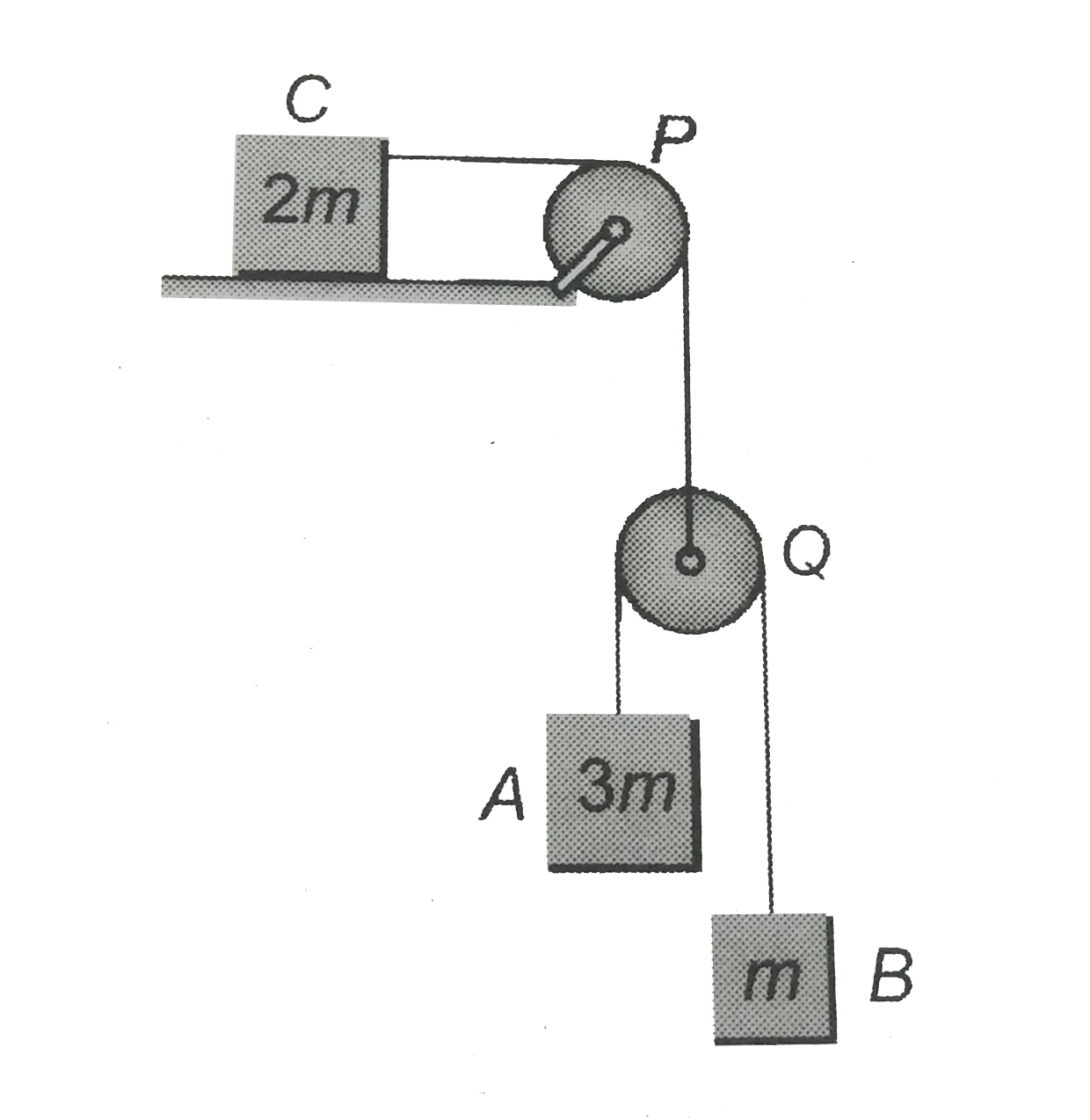
View Solution
Knowledge Check
The block shown in the figure in is equilibrium. Find acceleration of the block just after the string burns.
 A3g5B4g5C4g3DNone
A3g5B4g5C4g3DNoneConsider a system of two massless idealsprings and a block which is in equilibrium. The acceleration of block just after cutting the right spring is (Take g=10m/s2 ):
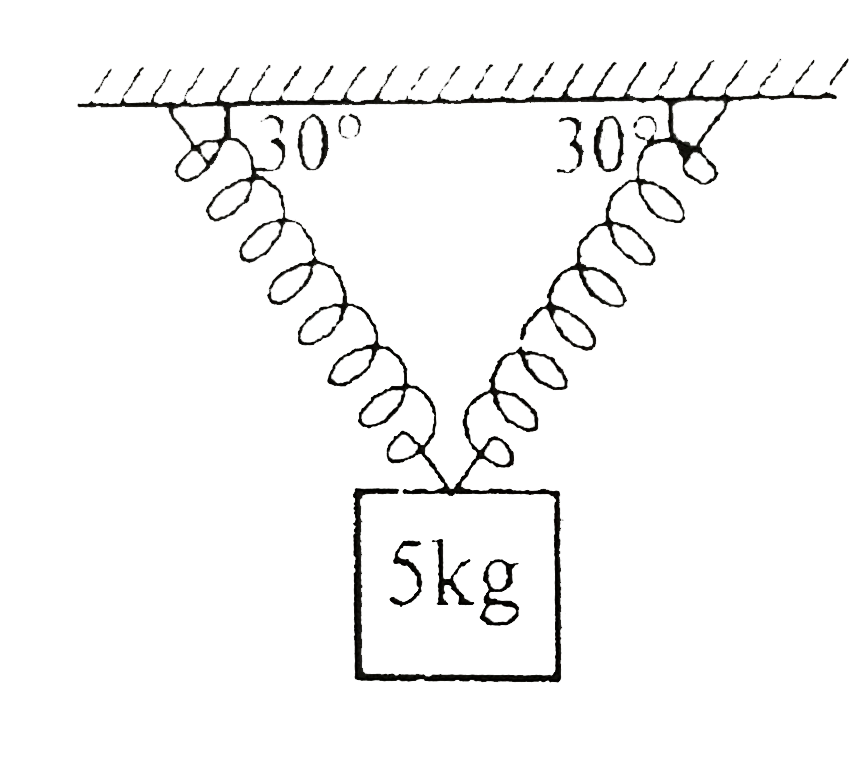 A5m/s2B10m/s2C10√2m/s2D20m/s2
A5m/s2B10m/s2C10√2m/s2D20m/s2The system shown in the following figure is in equilibrium and at rest. The spring and string are massless. Now, the string is cut. The acceleration of mass 2m and m, just after the string is cut, will be
 Ag/2 upwards, g downwards.Bg upwards, g/2 downwards.Cg upwards, 2 g downwards.D2g upwards, g downwards.
Ag/2 upwards, g downwards.Bg upwards, g/2 downwards.Cg upwards, 2 g downwards.D2g upwards, g downwards.
In the system shown in the figure all surfaces are smooth, pulley and string are massless. The string between the two pulleys and between pulley and block of mass 5 m is parallel to the incline surface of the block of mass 4 m. The system is released from rest. Find the acceleration of the block of mass 4 m . [tan37∘=34]
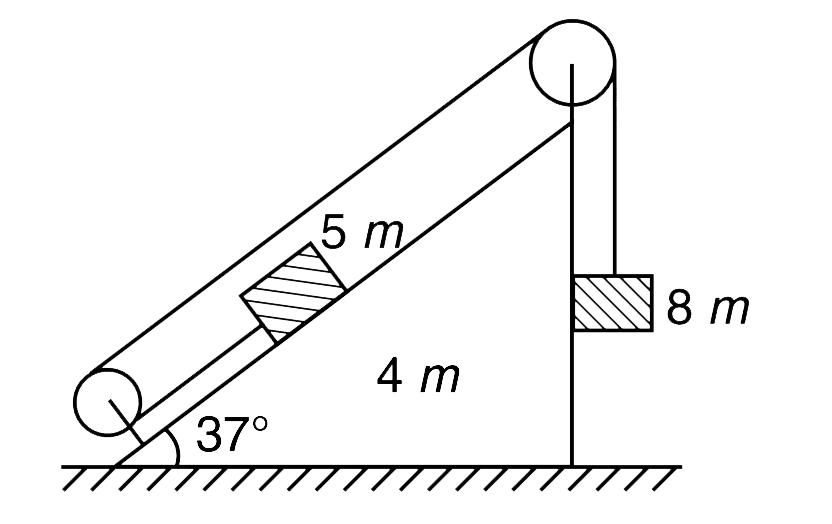
View SolutionTwo blocks A and B of same mass m attached with a light string are suspended by a spring as shown in fig. Find the acceleration of block A and B just after the string is cut.
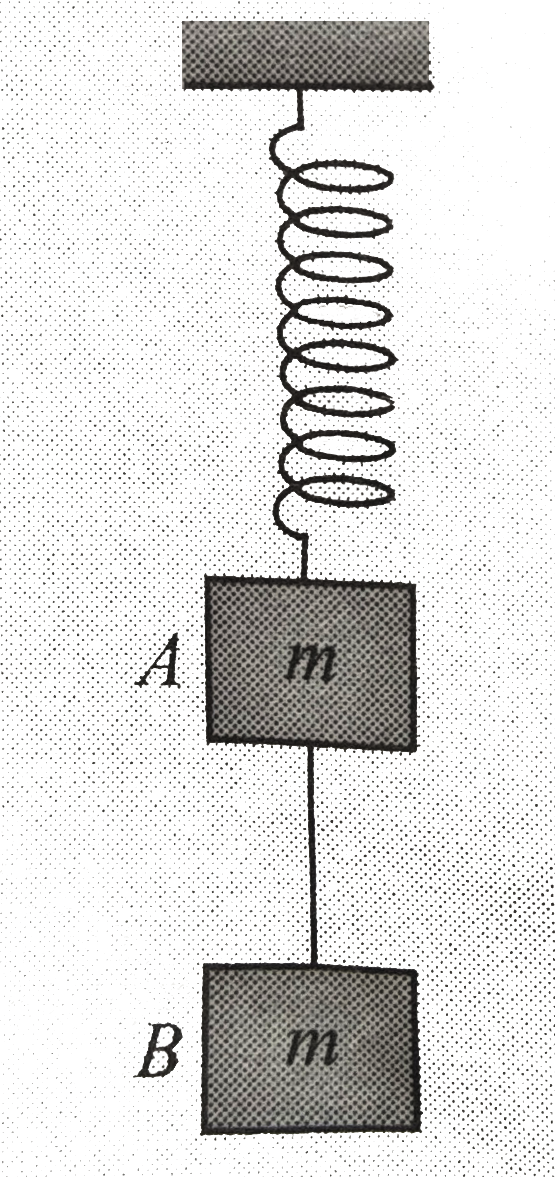
View SolutionTwo blocks A and B of same mass m attached with a light spring are suspended by a string as shown in fig. Find the acceleration of block A and B just after the string is cut.
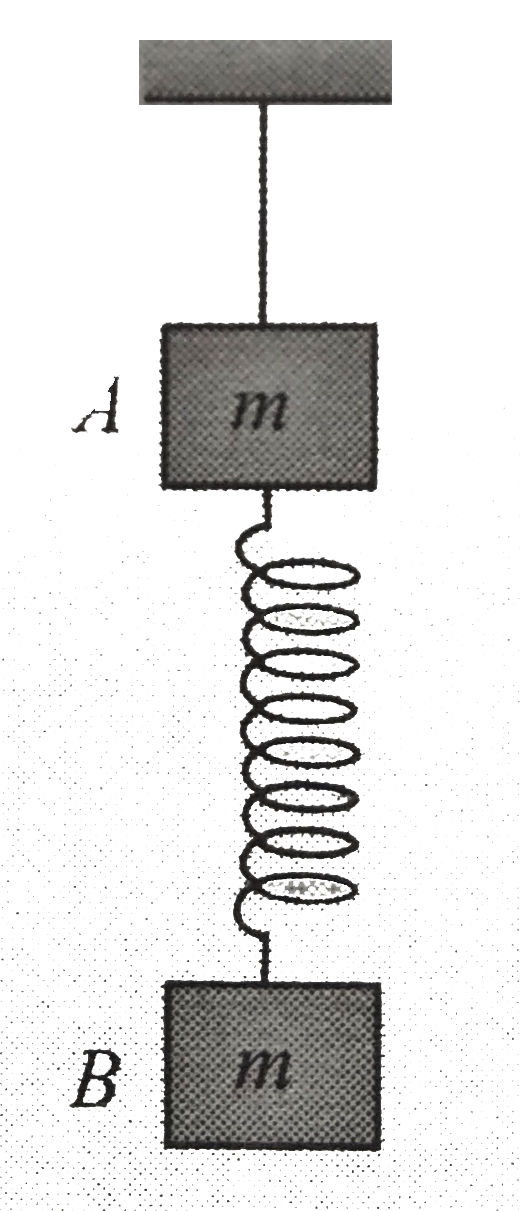
View SolutionSystem shown in fig is in equilibrium and at rest. The spring and string are massless now the string is cut. The acceleration of mass 2m and m just after the string is cut will be:

View SolutionIn the system shown all the surfaces are frictionless while pulley and string are massless. The mass of block A is 2m and that of block B is m. The acceleration of block B immediately after system is released from rest is
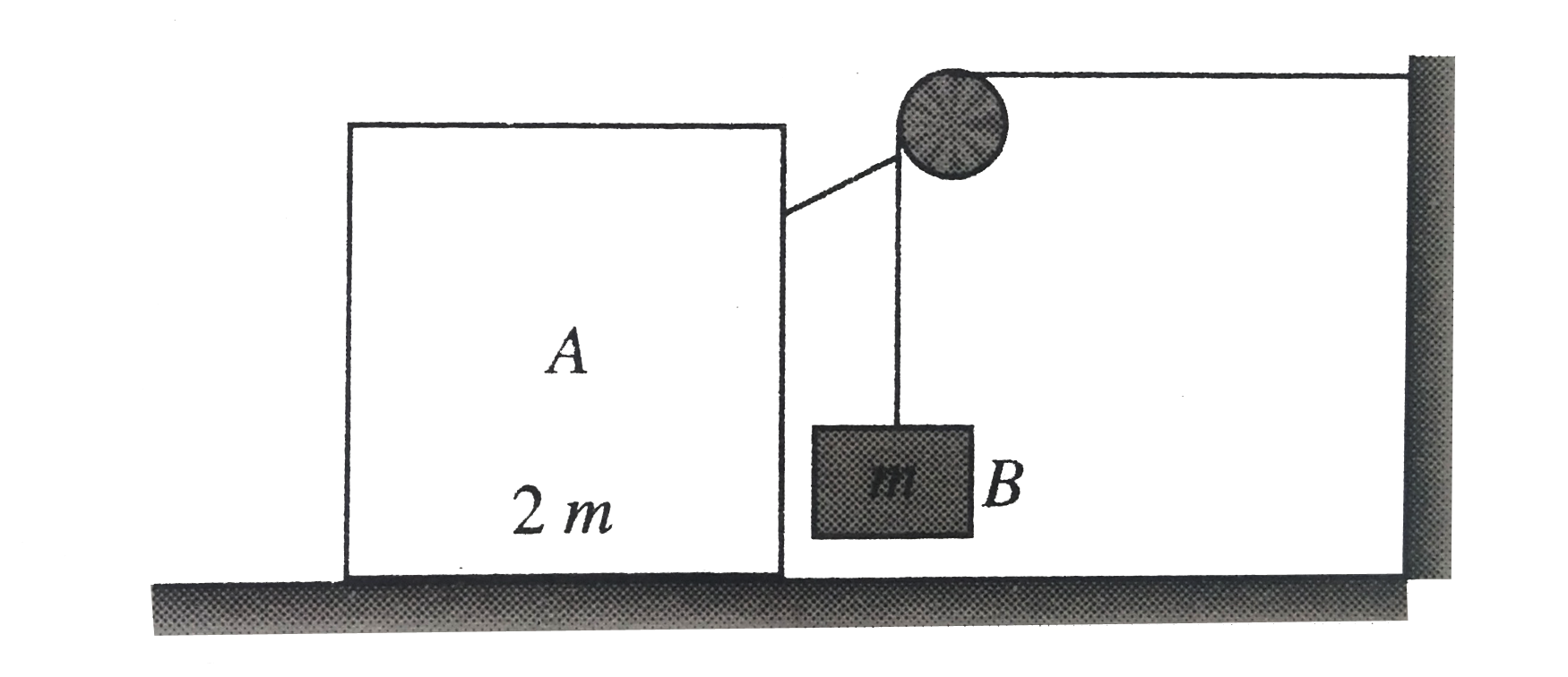
View Solution
